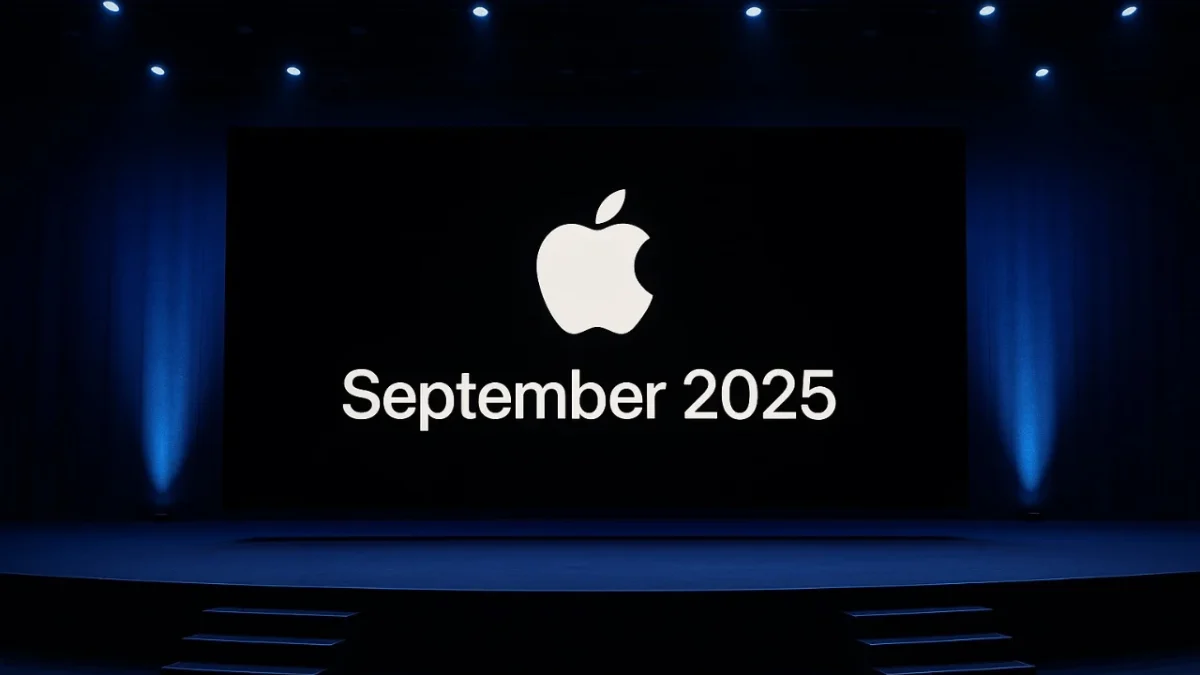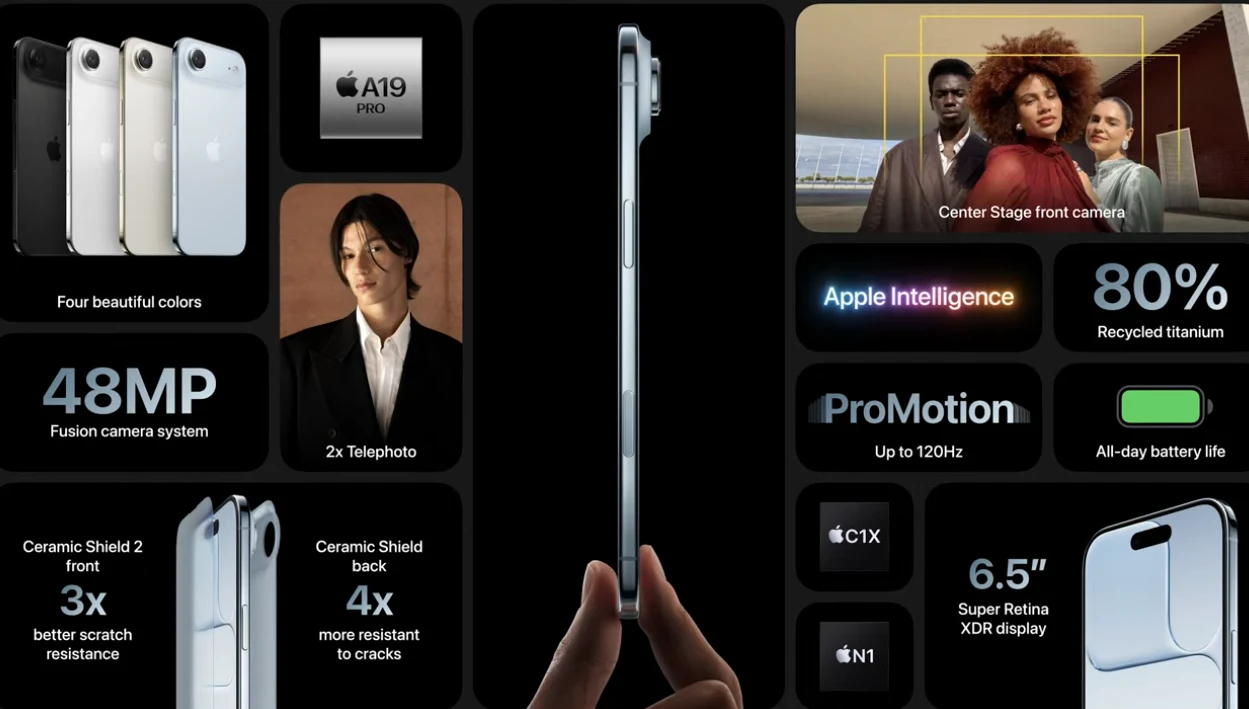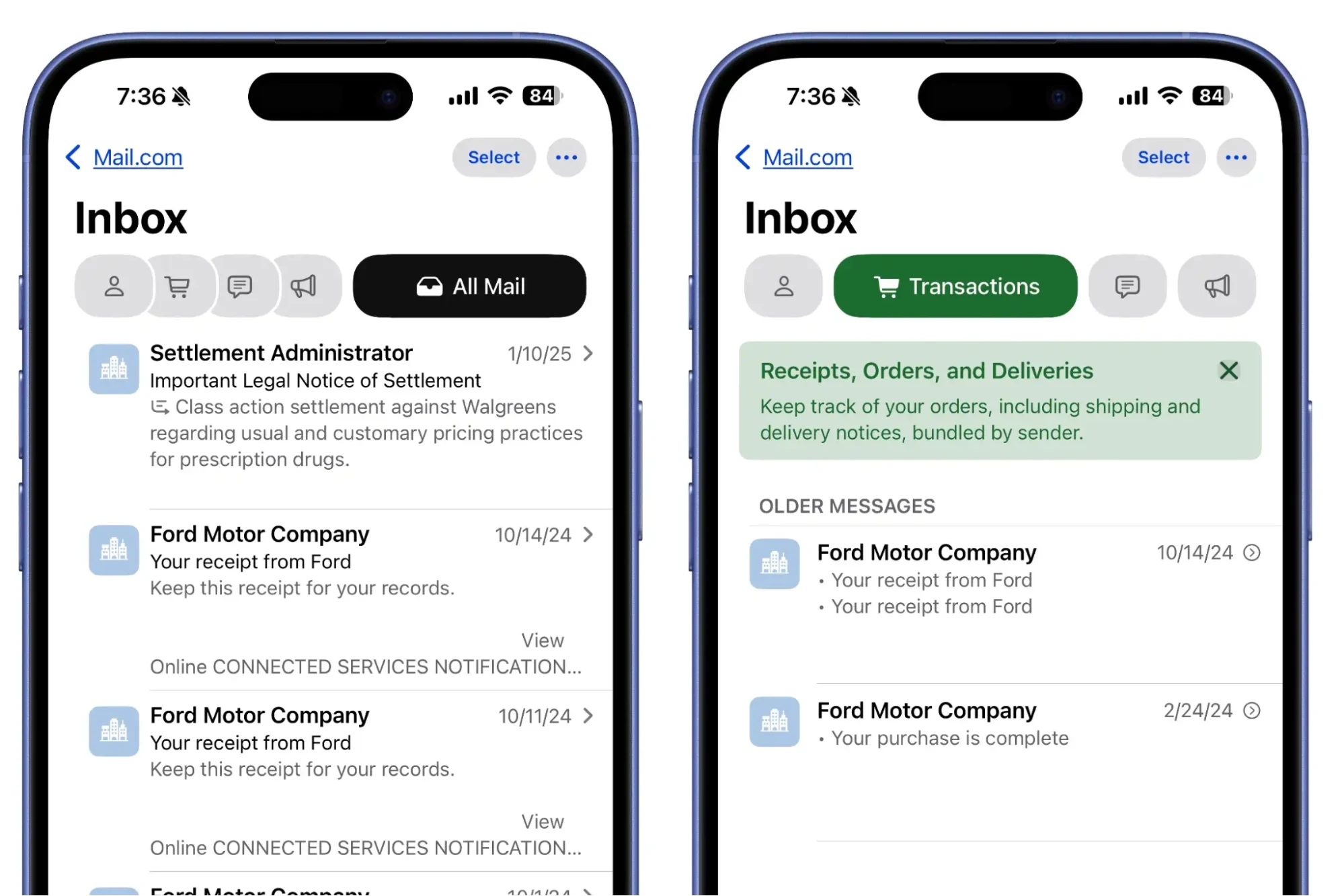
Every September, Apple takes center stage. The headlines celebrate sleek new devices and design wizardry, but marketers know these announcements always carry a deeper meaning. They are not just product launches, they are signals of how consumers will expect to interact with brands.
The September 2025 event gave us plenty to think about. iOS 26, the new Liquid Glass interface, branded mail, AI-powered inboxes, and subtle yet powerful hardware changes to all point to one thing. The customer journey is about to be reshaped once again. And for ecommerce marketers, this is not simply another OS update. It is a window into the next chapter of digital engagement. Brands that adapt to these shifts early will find themselves in a position of strength. Those that hesitate will struggle for visibility in a world where attention is increasingly filtered, summarized, and curated.
From Devices to Ecosystems

Apple is no longer selling us phones. It is selling us experiences that span across devices and contexts. Every screen, every surface, and every interaction is designed to feel fluid, personal, and alive.
The Liquid Glass interface may look like a cosmetic redesign, but it is much more. It is a reset of expectations. Consumers will now anticipate interfaces that shimmer with depth, respond to light and motion, and carry a sense of refinement.
This matters for marketers because the emails, push notifications, and in-app experiences you deliver will be judged against this backdrop. An outdated email template will not just look clunky, it will feel out of place. A push notification with flat, unconsidered design will jar against the polish of the operating system.
Consumers may not consciously compare your creative to Apple’s design. But subconsciously they will. And in a world where Apple sets the standard, looking out of step is the fastest way to be ignored.
The Inbox Reimagined

The most significant shift for marketers is not in the thickness of the new iPhone Air. It is in the way Apple has redesigned the inbox.
iOS 18 brought us categorized folders and AI summaries, and digest views. And, now with the introduction of a “better” Apple Intelligence working behind the scenes – messages are now sorted into Primary, Transactions, Promotions, and Updates. Repeat senders are collapsed into digests.
Marketers need to note this – Apple’s AI decides which lines of your content get surfaced in previews. In short, the inbox has become a battleground where attention is rationed.
For brands, this changes everything. Visibility is no longer a given. An image-heavy promo that relies on a banner headline risks being overlooked if Apple’s AI does not pull the right text into its summary. Vague subject lines will be buried in collapsed digests. Generic content will simply fade into the background.
This is why branded mail is so important. Through Apple Business Connect, brands can now display their verified logos directly in the inbox preview. This is not about vanity. It is about instant recognition. In a crowded Promotions tab, your logo becomes a trust signal that cuts through the noise.
The Emerging Role of RCS

One of the more intriguing developments is Apple’s growing support for RCS messaging. For years, SMS has been a blunt instrument. RCS however, opens the door to rich, interactive conversations inside iMessage that feel more like apps than texts.
For marketers, this is a powerful new canvas. Imagine a customer clicking on a promotion in email, getting a push reminder in app, and if they drop off, receiving an RCS-powered iMessage with tappable product cards, embedded checkout options, or dynamic offers. This is no longer a fragmented journey. It is a continuous flow of engagement where the brand feels present, helpful, and frictionless. As Apple embraces RCS, brands that experiment early will set the tone. Those who cling to plain SMS will find themselves filtered into the margins.
To learn about the differences between RCS and SMS. Please read this blog.
The New Rules of Engagement
Taken together, these updates point to a new reality. The old playbooks of blasting more emails, more SMS, more pushes will no longer work. Apple is designing its ecosystem to protect users from overload.
What will work instead is relevance, clarity, and trust. Design is becoming destiny. Consumers are being trained to expect aesthetics that match the elegance of Liquid Glass. Brands that cut corners in design will stand out for the wrong reasons. Clarity is now currency. Apple’s AI summarizers reward messages that surface key offers in plain text. A clear subject line and copy that gets to the point are not optional anymore, they are survival tactics.
Trust has become table stakes. Authentication and branded logos are not just technical requirements. They are signals of credibility in an environment where phishing and spam are rampant.
And context is replacing channel as the true competitive edge. The question is no longer whether to use email or push. It is whether you can meet the customer in the right moment with the right message, regardless of channel.
How Netcore Helps Brands Stay Ahead
At Netcore, we view these changes not as obstacles but as opportunities. Apple is raising the bar, and that rewards marketers who already prioritize personalization, trust, and design.
- Our AI-powered content generation ensures that subject lines and body text carry the clarity that Apple’s algorithms look for. Key offers are surfaced in ways that prevent them from being buried in digests.
- Our orchestration layer connects email, push, in-app, and RCS into journeys that feel seamless. Customers do
- And we simplify the complexities of branded mail setup, from authentication protocols to logo verification, so your identity is always visible and trusted.
Looking Past the Horizon
Apple’s updates are not just about 2025. They are a preview of where consumer behavior is headed for the rest of the decade. Inboxes will protect attention. Devices will anticipate context. Ecosystems will reward brands that harmonize with their design philosophy and punish those that do not.
The choice for marketers is clear. Either keep fighting yesterday’s battle with more volume and less relevance. Or embrace the new rules of clarity, trust, design, and context.
The brands that adapt now will not just survive. They will set the benchmark for what great ecommerce marketing looks like in the years ahead.
At Netcore, we believe the opportunity is not to compete with Apple’s ecosystem but to work in harmony with it. By aligning with its principles, marketers can create experiences so seamless they feel like a natural part of the device.
Apple has raised the stakes once again. The real question is whether your brand is ready to lead in the future they just unveiled. Talk to us today!
 Holiday Sales Are Won Now — Grab the 2025 Holiday Marketing Guide to Unlock More Revenue.
Holiday Sales Are Won Now — Grab the 2025 Holiday Marketing Guide to Unlock More Revenue. 












